On September 19, 2024, the inauguration ceremony for SDJU School of Aeronautics was held on Lin-gang campus.
The event was attended by notable figures, including Bi Cong, Director of the Aerospace and Oceanic Division of the Science and Technology Commission of Shanghai Municipality; Wu Qunfeng, Director of Development and Reform Division of Lin-gang Special Area Administration; Zhang Zhihua, Deputy Director of the Minhang District Science and Technology Commission; Shu Guogang, UGTC Chairman and Secretary of CPC UGTC Committee; Wei Qing, Director of Shanghai Institute of Space Propulsion; SDJU alumnus Wang Shunqun, Master Technician of Shanghai Aerospace Equipment Manufacturer Co., Ltd. and Vice Chairman of the Shanghai Federation of Trade Unions; Jin Hongming, Secretary General of the Shanghai Society of Aeronautics; and SDJU faculty, students, and alumni. Deputy Secretary of CPC SDJU Committee and Vice President Li Xiaojun presided over the ceremony.
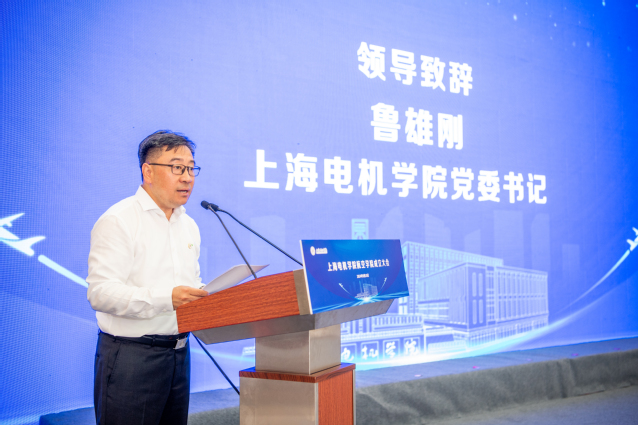
Secretary of CPC SDJU Committee Lu Xionggang emphasized that establishing School of Aeronautics (SA) is a strategic initiative to support the development of Shanghai’s civil aviation industry and to cultivate much-needed talent for the sector. SA aims to become a testing ground for industry-education integration, promoting collaboration between university and industry. He noted that SDJU will leverage its expertise in high-end equipment manufacturing and services to plan the future development of SA, with the goal of specializing in areas such as energy equipment manufacturing, aerospace manufacturing and services. Secretary Lu then expressed his hope for expanded cooperation with the aerospace industry to bring cutting-edge technologies into classrooms and textbooks, jointly developing a new paradigm for cultivating application-oriented talent in aviation, and collaborating to forge outstanding aerospace manufacturing and maintenance engineers.

Yang Jie, Director of Higher Education Department at Shanghai Education Commission, highlighted that the new school not only addresses the growing demand for talent in Shanghai’s aerospace industry but also plays a vital role in optimizing and elevating higher education in the city. He stressed that the focus on aerospace will enhance SDJU’s ability to contribute to the regional economic and social development. He encouraged SDJU to leverage School of Aeronautics to strengthen its talent pipeline, foster innovation, and make significant strides in research and social services.
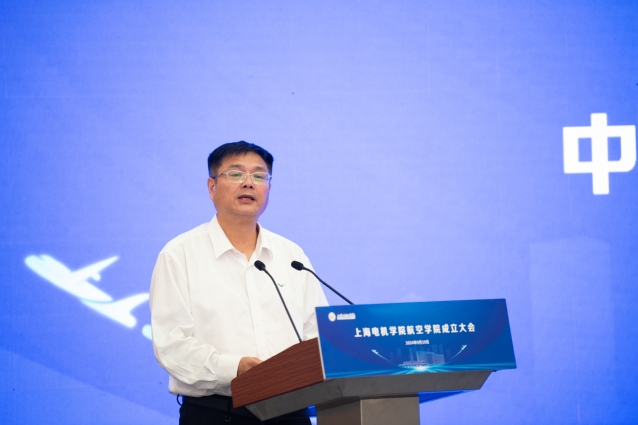
Jiang Xin, Director of Science and Technology Department at COMAC (Commercial Aircraft Corporation of China), praised the strong partnership between COMAC and SDJU, noting that many SDJU alumni have become key contributors to the company. He also mentioned that COMAC has already been deeply involved in building SDJU’s Aviation Industrial School and has launched pilot initiatives for talent development in the field of large aircraft. Jiang emphasized the need for continued collaboration in building research platforms and tackling key technologies, with the goal of contributing to China’s aviation industry.
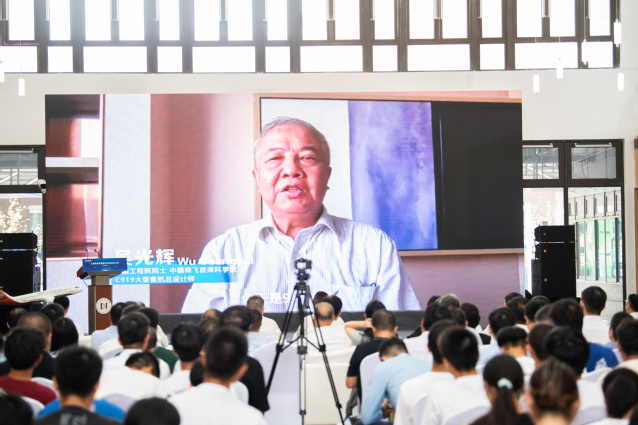
In a video address, Wu Guanghui, Chief Designer of the C919 aircraft, called this a pivotal moment for China’s aerospace development. He described the founding of School of Aeronautics as a milestone for SDJU and an important step toward becoming a national pilot of applied technology university with a specialization in aerospace. Wu expressed his hope that the new school would grow rapidly and become a key force in advancing national strategies, supporting urban development, and contributing to the Lin-gang area’s industrial goals.
Li Lei, Director of SDJU’s Office of Science and Technology Administration and SA Executive Dean, introduced the development plan of SA. The School of Aeronautics will focus on the latter stages of the aircraft and engine supply chain, covering “manufacturing, testing, and operational maintenance”. Additionally, it will delve into the “design, manufacturing, assembly, application, and services” of commercial satellites, establishing an aerospace discipline system centered on intelligent manufacturing and operational maintenance. SDJU aims to make SA a leading innovation hub in aerospace manufacturing and maintenance and a cradle for producing top-tier aerospace engineers, with significant national influence in the integration of education and industry.
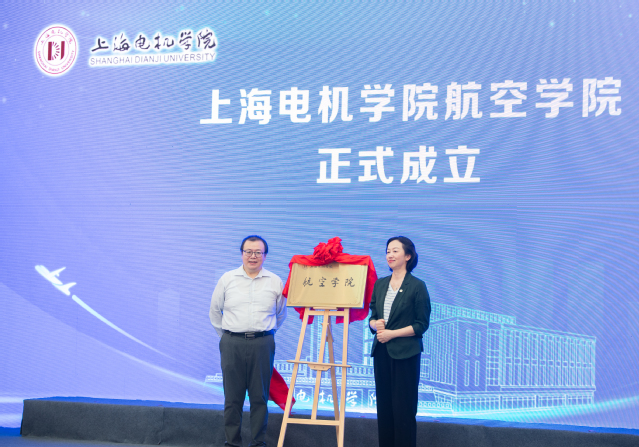
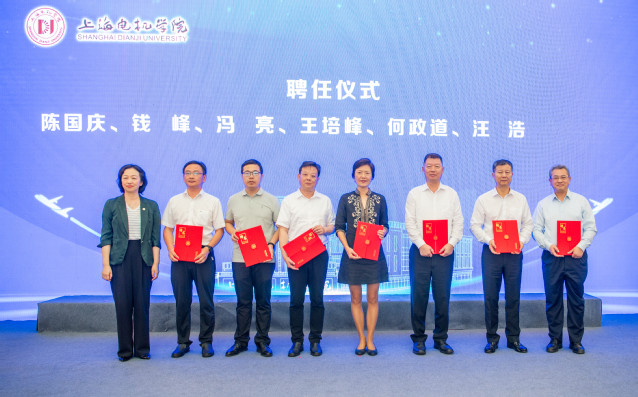
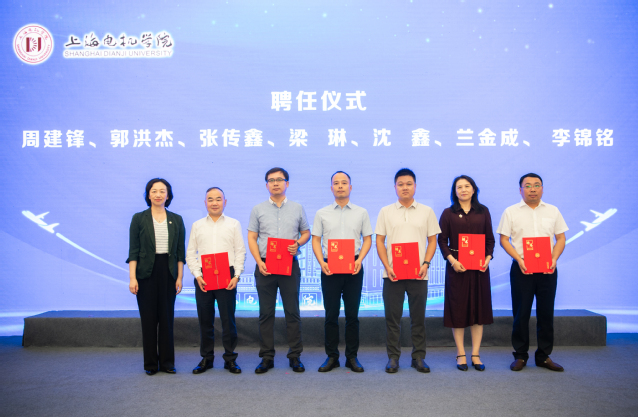
At the inauguration, SDJU President Gong Siyu awarded part-time professorships to 14 industry experts.
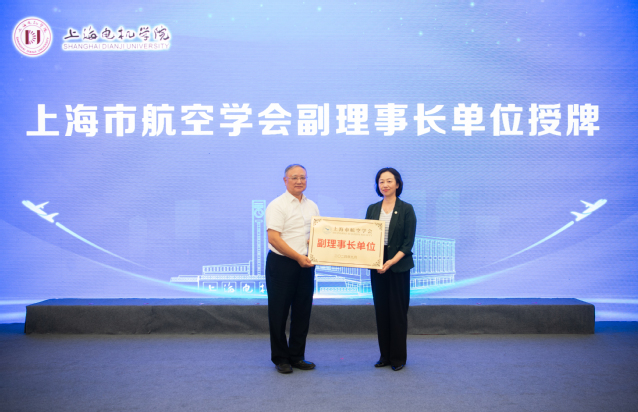
And SDJU was also recognized as a Vice Chairman Unit of Shanghai Society of Aeronautics.

Additionally, SDJU signed cooperation agreements with several key partners, including Shanghai Society of Aeronautics, Commercial Aircraft Industrial Park, Air France-KLM, Shanghai DG Intelligence Technology Co., Ltd., and CnTech. These partners will support SDJU in innovation, talent development, platform building, and technology transfer.
Following the signing ceremony, SA held its first academic forum.
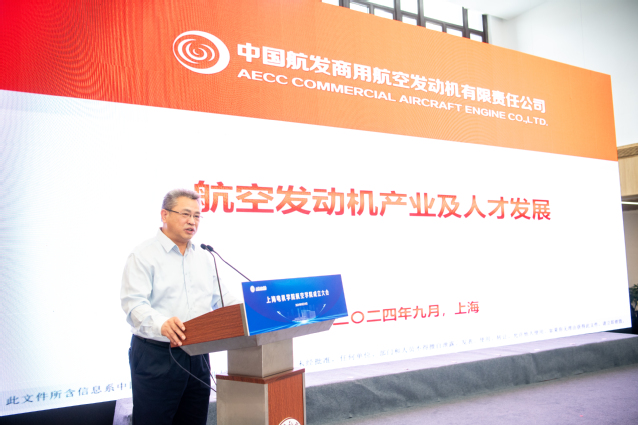
Chen Guoqing, Assistant GM and Party Secretary of AECC Commercial Aircraft Engine Co., Ltd., delivered a keynote speech on Aircraft Engine Industry and Talent Development. He outlined the current state and future trends of the aircraft engine industry, highlighting the critical role of talent in driving industrial progress. Chen called on universities to collaborate closely with enterprises to ensure talent reserves for the next stages of mass production, customer service, and maintenance of domestic commercial aircraft engines, forming a comprehensive talent pipeline that spans design, research and development, production, and delivery.
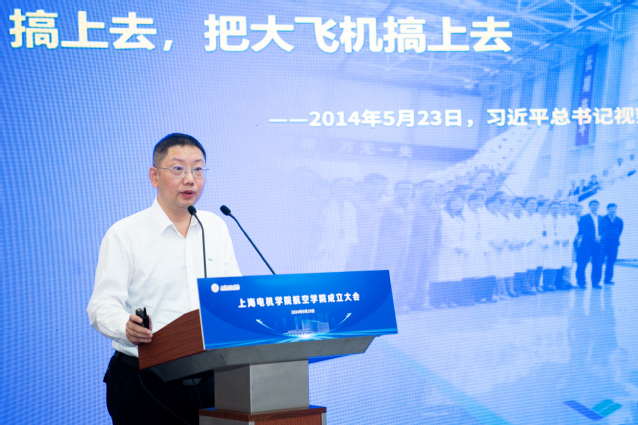
Lu Hu, Chief Engineer and Party Committee member of COMAC Shanghai Aircraft Manufacturing Co., Ltd., also spoke at the forum, delivering a report titled Let China’s Large Aircraft Soar into the Sky. He emphasized that after 16 years of innovation, China’s large aircraft industry has made significant progress. Looking ahead, the market prospects for China’s large aircraft industry are promising, with the product lineup set to be further refined and the scale of the industry expected to expand. In response to current challenges, such as the shortage of experienced commercial aircraft talent, the need for industry growth, and structural adjustments, his company will collaborate with universities to explore deep, sustainable, university-enterprise cooperative education models. By working closely with academic institutions, COMAC will continuously supply the large aircraft industry with highly skilled, technically proficient talent, whose strong convictions and expertise will serve as the new engine driving the safe and high-quality development of large aircraft.
The establishment of School of Aeronautics marks an important step in SDJU’s efforts to develop specialized aerospace programs and to become a national pilot in applied technical education. SDJU has already launched several aerospace-focused research platforms, such as the Aviation Research Institute and the Micro and Nano Satellite Intelligent Research Institute. SDJU has also recruited top-tier aerospace professionals and partnered with major industry players like OMAC Shanghai Aircraft Manufacturing Co., Ltd., Eastern Aviation Technology Co., Ltd., and Spring Airlines to create a comprehensive talent cultivation system. Looking ahead, SDJU plans to further strengthen its aerospace programs, deepen collaboration with the aerospace industry, and cultivate outstanding engineers to contribute to the growth of China’s aviation and aerospace sectors.






